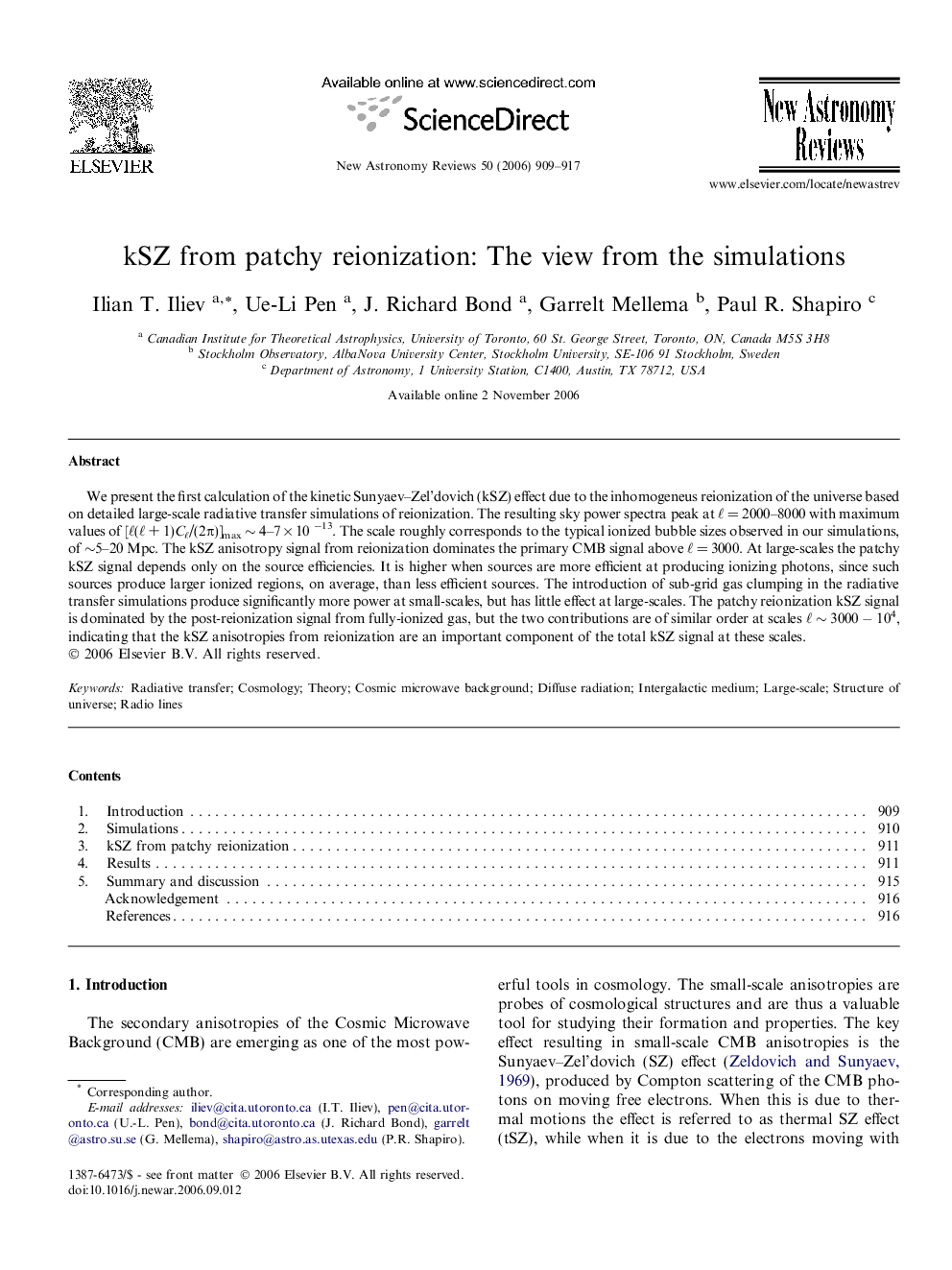| Article ID | Journal | Published Year | Pages | File Type |
|---|---|---|---|---|
| 1780050 | New Astronomy Reviews | 2006 | 9 Pages |
We present the first calculation of the kinetic Sunyaev–Zel’dovich (kSZ) effect due to the inhomogeneus reionization of the universe based on detailed large-scale radiative transfer simulations of reionization. The resulting sky power spectra peak at ℓ = 2000–8000 with maximum values of [ℓ(ℓ + 1)Cℓ/(2π)]max ∼ 4–7 × 10 −13. The scale roughly corresponds to the typical ionized bubble sizes observed in our simulations, of ∼5–20 Mpc. The kSZ anisotropy signal from reionization dominates the primary CMB signal above ℓ = 3000. At large-scales the patchy kSZ signal depends only on the source efficiencies. It is higher when sources are more efficient at producing ionizing photons, since such sources produce larger ionized regions, on average, than less efficient sources. The introduction of sub-grid gas clumping in the radiative transfer simulations produce significantly more power at small-scales, but has little effect at large-scales. The patchy reionization kSZ signal is dominated by the post-reionization signal from fully-ionized gas, but the two contributions are of similar order at scales ℓ ∼ 3000 − 104, indicating that the kSZ anisotropies from reionization are an important component of the total kSZ signal at these scales.
